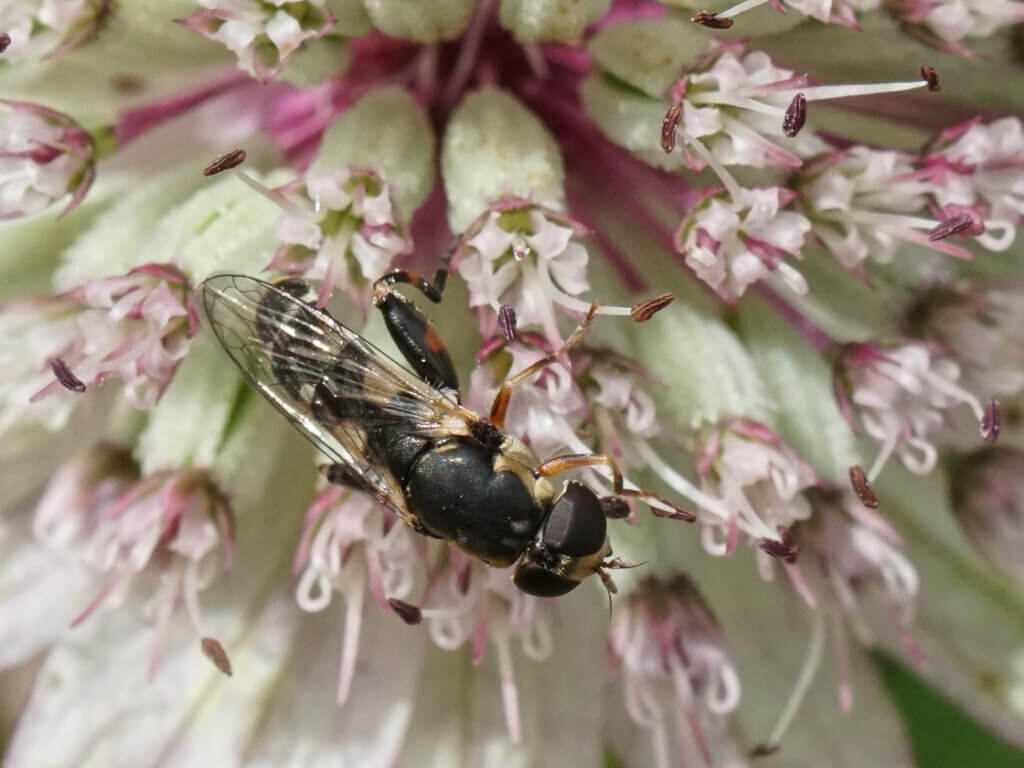
Social Distancing Week 16. Syritta pipiens.
Paul writes: Syritta pipiens is one of the commonest garden hoverflies. It isn’t as obvious as lots of its bigger or more brightly coloured cousins but once you know what to look for spotting it is quite simple.
They’re about 7mm long, very narrow bodied with a rounded head and short antennae, quite dark until they fly then you will notice a couple of spots on the abdomen. The most obvious feature are the swollen thighs on the back legs. They usually rest with these stuck out at the side, so in spite of the small size the overall shape is quite distinctive. The other helpful characteristic is their behaviour. Syritta pipens are one of the most active hoverflies. The males are very territorial, so once they find a suitable patch will constantly be battling for position. This usually consists of hovering quite close to a flower head and darting in between blooms to chase other males off, whilst looking for a female. Females are content to sit on the flower head feeding.
You can find them on lots of different garden flowers. The one pictured is on an Astrantia. Each year in my garden this is a magnet for Syritta pipiens and several other small flies and bees. The hoverfly is common and widespread throughout the UK and will be found in most gardens, from the beginning of May through into autumn. At times it can be abundant if breeding conditions are right. The larvae live in wet decaying matter, such as compost.
[registration_form]
One of my Lockdown sanity-saver projects has been to do a photo bioblitz of the gardenand the diversity of hoverflies has amazed me. Even in my small garden high up in the Welsh hills there’s over 20 species, including this thick-legged beauty. I’m sure there are more but I’ve ticked off the easy ones and now I’m nit-picking through ID guides and looking for pale feet and hairy knees to separate the trickier species. I’m not sure if it’s starting to get counter productive on the sanity side of things…
Make a hoverfly lagoon in your garden
https://www.thebuzzclub.uk/hoverfly-lagoons
They need somewhere to breed apart from somewhere to feed.
Syritta pipiens seems to be partial to the Ceanothus in my garden. Unfortunately it doesn’t flower for very long.
I think astrantias are undervalued in general. I wouldn’t want to be without them. Or geraniums, or lavenders, or roses, or sweet marjoram, or Dame’s Violet, or lilac, or choisya, or ceanothus.